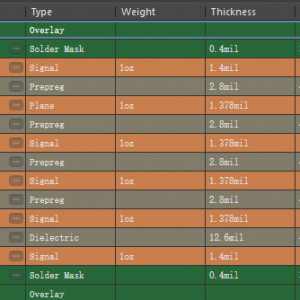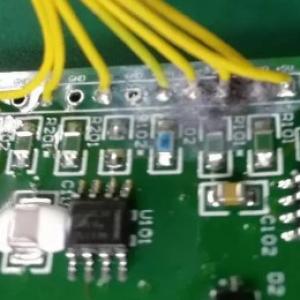HDI PCBs
HDI PCB manufacturing is quickly becoming the ultimate solution for smaller, more efficient and more durable PCBs. High Density Interconnect (HDI) is a high performance design characterized by its high density of components and wiring using micro-through-hole, blind-hole and buried-through-hole or micro-through-hole technologies and interconnections with built-in printed circuit board (PCB) laminates. HDI PCB designs are desirable for reducing overall cost. This is achieved by reducing the size and the number of layers compared to standard technology PCB designs. It also has better electrical performance and is one of the key technologies driving the development of PCB electronics.HDI design requires the latest advances in PCB interconnect technology: with the help of the latest PCB technology, HDI PCBs can be defined as printed circuit boards that utilize some or all of the following features; blind and buried through-hole or micro-through-hole technology, high signal performance considerations, micro-through-hole and built-in PCB stack. High Density Interconnect (HDI) is a PCB technology that received much attention in the late 20th century. Its popularity has grown tremendously due to its many advantages over traditional PCBs.
The advanced multilayers deployed by HDI PCB manufacturing allow you to integrate multiple layers to create multilayer PCBs.
The six main types of HDI PCB boards
1. buried through channels2. Coreless structures used with layer pairs
3. Passive substrates with no electrical connections
4. Surface-to-surface offsets
5. Two or more HDI layers and vias
6. Coreless alternative structures using a pair of layers
Functionality of HDI PCBs
One of the features of HDI boards is that they typically have apertures in the 3.0 to 6.0 mil range and line widths in the 3.0 to 4.0 mil range. These features allow you to minimize the pad size to fit a wider range of layouts within each unit area.Another very important feature of HDI boards is their blind, micro and buried holes with diameters less than 0.0006mm. The various through-holes allow you to save space on the HDI board.
Instead of passing through, blind and through holes have similar characteristics to a point inside the board. Buried holes connect only the internal layers of the board and do not include the external layers.
These features allow HDI PCBs to have a higher circuit density than conventional PCBs.
Advantages of HDI PCBs
HDI PCBs can be mounted on both sides of the board to allow designers to integrate more components into a smaller board.It is more robust and can provide space for increased strength and reduced perforation.
Extend the battery life of handheld and other battery-powered devices because of Tobit's reduced power consumption.
It extends device battery life by reducing thermal degradation.
It also allows for higher and more efficient density transfers and calculations in smaller end-user products such as military devices, smartphones, medical devices and aerospace equipment.
When you reach the point of mass production of your PCB design, HDI PCBs ensure higher reliability of transfer, and if you use smaller BGA and GFP packages, HDI PCBs will have more space to accommodate denser BGA and QFP package PCB technology compared to traditional packages.
Less heat transfer, as heat has to travel farther before it can escape to the HDI PCB. HDI PCBs often pave the way for smaller, more efficient and more durable products that still have their design and overall performance intact
HDI PCB Applications
Healthcare
In recent years, HDI PCBs have driven some of the major waves of change in the healthcare industry. Today, medical devices are primarily HDI because of their ability to fit into small devices such as labs, impact and imaging equipment. The type of medical equipment plays a very important role in diagnosing disease and providing life support, especially in diagnostic, monitoring and medical institutions. Small cameras can be used to look inside the patient for proper diagnosis. Interestingly, the size of cameras is getting smaller and smaller, but the resolution and quality of the images are not affected at all. Thanks to HDI PCB technology, these advances have been contained. Thanks to these advances, colonoscopy has become much easier.Automotive
Manufacturers are looking for smaller PCBs because they can save more space in the car. With future car brands like Tesla, electronics integration is critical for automakers to provide a better driving experience for customersSmartphones and tablet computers
Wearable technology
Military and aerospace equipment
HDI PCB Structures
Micro-sections





